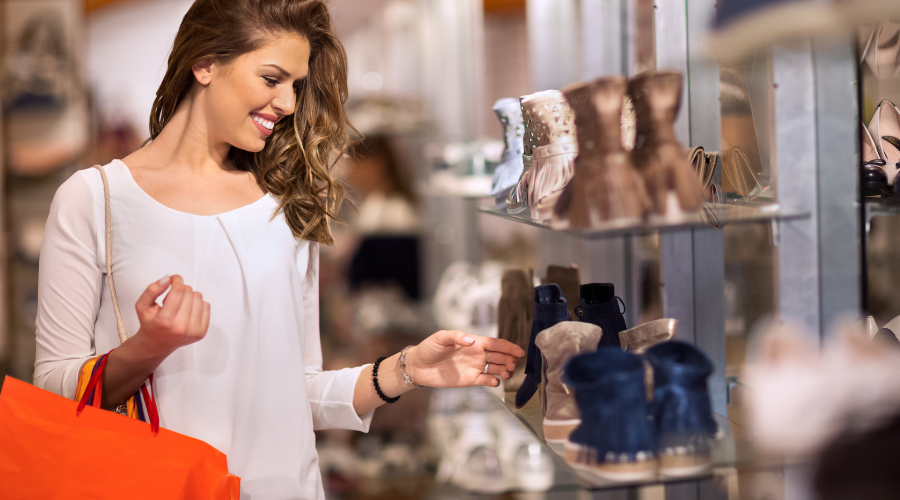Using In-Store Video Analytics Insights to Improve Customer Experience

Gather Current, Accurate Customer Insights
To improve the customer experience and drive more sales, retailers often strive to have more visibility into their customer behaviors, traffic, and in-store customer trends. Some deploy a variety of stand-alone technologies — such as footfall traffic counters, point of sale systems, and Bluetooth-based beacons — to gather customer demographic data, uncover in-store shopping patterns, and measure customer engagement with staff or products.* Despite those kinds of technology investments, a recent Forrester report found that two thirds of retailers were not adequately anticipating customer needs. For many retailers, collecting and aggregating this data is a manual exercise, which makes the intelligence less accessible. According to Retail Dive, “Only 33% of the respondents that anticipated customer needs and only 9% of those that didn’t said they updated all the data in their custom profiles in real time automatically.”
The retailer’s face a two-pronged challenge when it comes to collecting and utilizing accurate customer data – the first being reliance on manual collection and the second being that the data is often siloed in various departments or workgroups. Video analytics solves both of those problems to provide many points of customer trend data that managers can leverage to increase operational efficiency and enhance customer experiences. The technology is a valuable adjunct to existing video surveillance systems and the best way to get more cross-functional value out of surveillance network investments.
Video analytics technology processes surveillance – either on demand or in retail-time – and uses AI-driven capabilities to extract, classify and recognize objects in video. Video surveillance is transformed into valuable insights, with data being searchable, actionable, and quantifiable for a variety of applications for several different retail functions, including: security, merchandising, marketing, and operations.
For instance, real-time alerts triggered by a video analytics system can be based on objects and behaviors detected in video that have been pre-defined by the surveillance operators to notify stakeholders across an organization of a number of key metrics: Managers can be aware of evolving situations in stores, warehouses, administrative offices, loading docks, distribution centers, and store parking lots. To enable careful assessment and proactive response – whether for security or customer experience – real-time alerts can be used to update managers:
- When a light is turned on after-hours to activate security decision making,
- If crowding or long service queues are forming to enable customer service to react,
- When the number of people in a store exceeds an occupancy limit, so entry can be restricted to keep everyone safer.
Share Information Across Silos
While the real-time applications of the technology are extensive, merchants can also leverage the technology to improve efforts to anticipate customer needs by understanding trends in the store. Video intelligence software is helpful because it aggregates video data over time and visualizes insights into customizable dashboard reports. With charts, graphs, and heatmaps demonstrating the aggregated data, retailers are delivered operational and business intelligence regarding footfall traffic, customer demographics, and more that drive important decision-making. Such reports also can be shared across departments to bridge silos. Corporate executives need reliable data for each store, and easy, shareable reports that compare data points – both at the individual store level as well as nationally and internationally across a retail chain.
Improve Navigational, Traffic Volume, and Demographic Data
Heatmaps can illustrate store pedestrian traffic patterns in store to identify the most common pathways and aisles that customers navigate, and the most (or least) popular product displays or information kiosks. This information provides actual, actionable data for merchandising managers to understand which products appeal to customers, as well as the ideal place to position products. Similarly, store planners use this information to optimize store layout and space utilization.
Marketing managers need to know demographic statistics such as the gender and age (men vs. women vs. children) of the shoppers who typically enter their store, or chain of stores. This can help drive targeted advertising and merchandising for audiences that already frequent the store, as well as to attract new visitors and loyal customers. Customer service managers can draw reports to analyze long-term data regarding the average amount of time a customer stands in line and identify problem hotspots for efficient queue and crowd control at various locations within a store. Similarly, they benefit by having people-count reports that indicate the average number of people in a checkout counter queue on certain days of the week, or holidays, or time of day. This data can also be correlated with POS and sales data to identify in-store shopping cart abandonment.
Another key performance indicator that can be measured with video analytics is in-store traffic, unique traffic, as well as return and bounced visits – all while excluded recognized employees from these reports. By anonymously identifying single individuals within video, retailers can accurately track and report on visits, while preparing for peak traffic times.
Forrester Research found that 66% of retailers don’t effectively anticipate customer needs. Those retailers are at a competitive disadvantage. With video content analytics software to complement their video surveillance systems, those retailers could dive more deeply into traffic metrics, and gather accurate data about in-store customer activity. Moreover, they can share that data as needed, with multiple stakeholders. This combination enables both C-level and store-level managers to make better decisions about merchandizing, product and store layout, customer service and marketing, all of which can dramatically improve the organization’s bottom line, and its ability to anticipate and serve customer needs.
* Source: Walkbase, “Wi-Fi Analytics for Retail Stores: Buyers Guide”
Signup to receive a monthly blog digest.